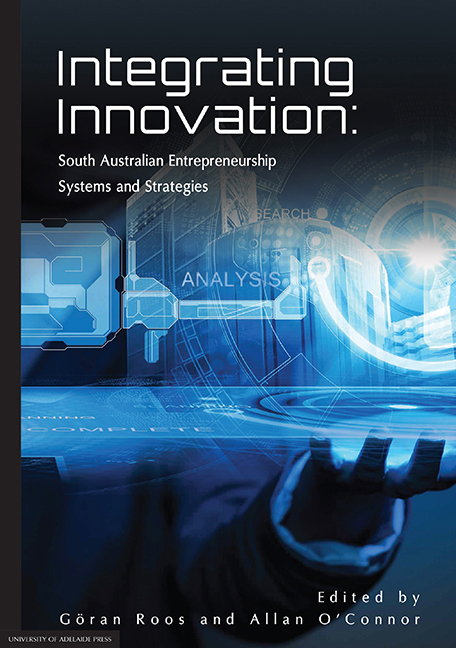Book contents
- Frontmatter
- Contents
- Chapter Abstracts
- Notes on Contributors
- Foreword
- Introduction
- Part 1 Regional-level perspectives
- Part 2 Firm-level perspectives
- 5 Do clusters matter to the entrepreneurial process? Deriving a conceptual model from the case study of Yalumba
- 6 Operationalising innovation: Hotwiring the creative organisation
- 7 Business model innovation in nonprofit social enterprises
- Part 3 Innovation management perspectives
- Conclusion
6 - Operationalising innovation: Hotwiring the creative organisation
from Part 2 - Firm-level perspectives
Published online by Cambridge University Press: 05 February 2016
- Frontmatter
- Contents
- Chapter Abstracts
- Notes on Contributors
- Foreword
- Introduction
- Part 1 Regional-level perspectives
- Part 2 Firm-level perspectives
- 5 Do clusters matter to the entrepreneurial process? Deriving a conceptual model from the case study of Yalumba
- 6 Operationalising innovation: Hotwiring the creative organisation
- 7 Business model innovation in nonprofit social enterprises
- Part 3 Innovation management perspectives
- Conclusion
Summary
Introduction
In order to thrive in the twenty-first century, organisations need not only to be able to recognise complexity and sustainability as key components of business, but also to be able to foster and harness them. Those who operate successfully in such an environment go beyond organisational learning and strategy planning to building adaptive, innovative capabilities which result in sustained competitive advantage. This chapter explores how such adaptation and innovation are coupled with a capacity for strategic innovation and the ability to ‘hotwire’ across industry boundaries, and how such abilities ultimately decouple organisations from the confining need to know what is over the horizon in order to be able to deal with it.
Much has been written on how to facilitate and nurture innovation in organisations, but the concepts are often disaggregated and analysed as individual processes, practices or measures. This fails to take into account the complexity of interconnectedness and interdependence which both creativity and innovation entail, whether within the organisation or across markets and industry sectors as open innovation gains purchase. The level of interconnectivity renders it challenging to design operational structures and processes, and even organisations which embrace creative problem solving sometimes adopt essentially linear processes in their innovation labs and ‘learning gartens'. The problem-solving methods are structured around staged environments and sequential procedures, and this is often not the best format to allow abstract thought.
This does not mean that organisations cannot build structures and processes which facilitate creativity and innovation. Though novel ideas are created in informal spaces and interactions, such opportunities must still be created and facilitated. Further, it must be easy for the outcomes to be captured, and also to be brought to fruition. A level of order is required to support innovative organisations in their steerage and operation. This chapter summarises such order as the intertwined themes of space, time, diversity and interconnectedness.
Each of these themes has multiple, intertwined elements which the innovative organisation builds into their physical and procedural structures and support mechanisms in order to facilitate and nurture innovative practice and creativity. This includes aspects such as the physical layout and flexibility of spaces, and methods of capturing and applying both code-able and non-code-able tacit knowledge.
- Type
- Chapter
- Information
- Integrating InnovationSouth Australian Entrepreneurship Systems and Strategies, pp. 159 - 204Publisher: The University of Adelaide PressPrint publication year: 2015



